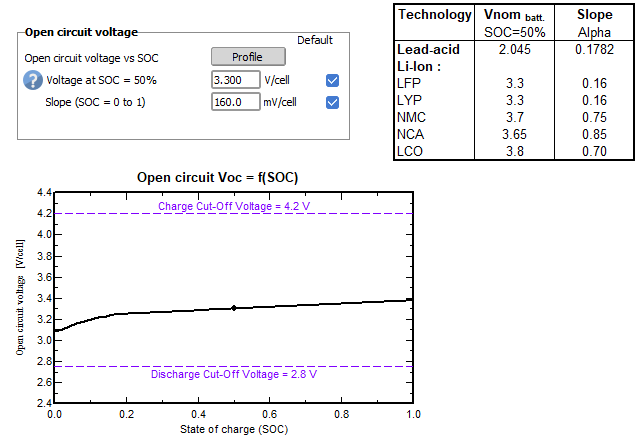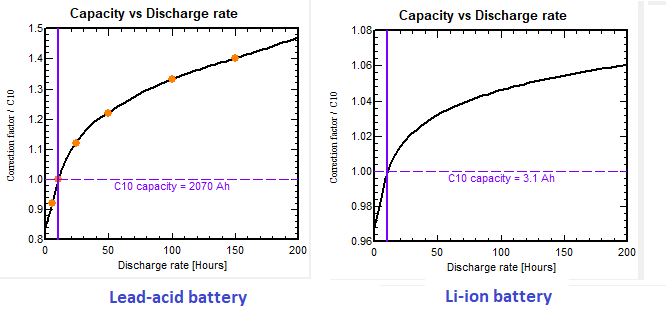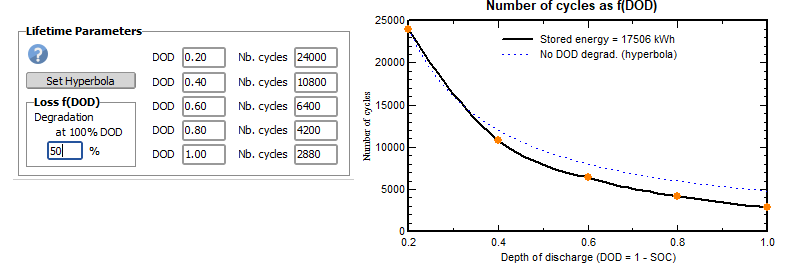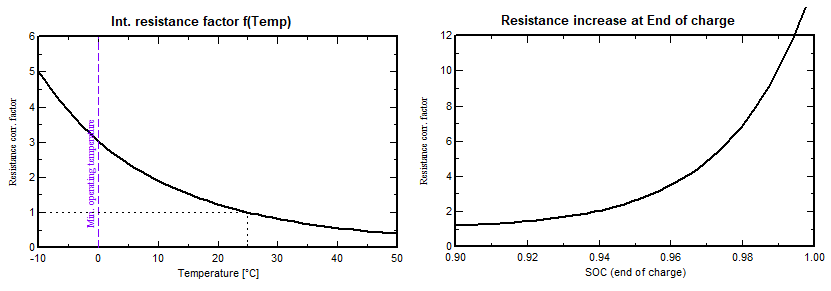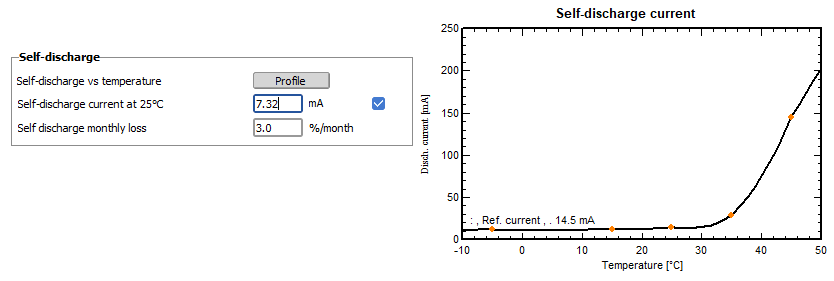Detailed model parameters
This page gives a detailed description for each specificity of the battery model. For each category, you just click profile for getting the plot and corresponding parameters.
Open circuit voltage as function of SOC
This is the basis of the battery voltage model. This defines a basic voltage at SOC = 50%, and a slope, dependent on the battery technology.
NB: The table gives nominal values for different technologies, but you may specify your own values.
Capacity as function of the discharge rate and temperature
Remember that the capacity is highly varying with the discharge rate, especially for Lead-acid batteries. The Li-ion batteries use the Peukert model.
There is also a variation according to the temperature, especially below 10°C. 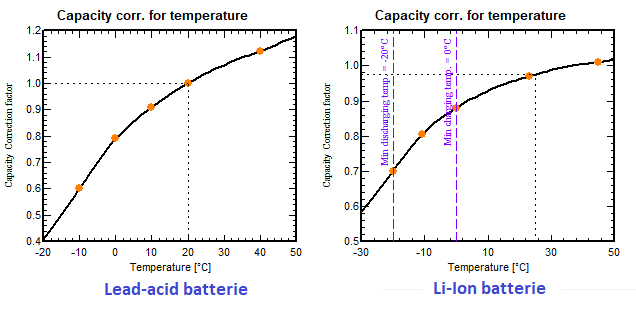
Lifetime, number of cycles
The simulation evaluates the number of cylces during the simulation process (SOWCycles variable). The datasheets usually mention the number of cycles until the end of the battery life. But they rarely mention at which DOD, nor the criteria for the definition of the end of life. When not present this is often a number of cycles at 80% DOD, and an end of life when the capacity reaches 80% of the nominal. The number of cycles as a function of the DOD is an hyperbolic function: NbCycle = Nb cycles at 100% DOD / DOD. PVsyst proposes a profile with 5 points. You can specify the number of cycles for one DOD, and ask for completing the hyperbola (button Set Hyperbola).
Then it is possible to modify some points, or ask for an additional degradation for deep discharge.
Internal resistance
In our lead-acid model, we don't consider any temperature dpendency of the internal resistance.
In the Li-Ion model, the resistance significantly increases when the temperature decreases, according to the Arrhenius behavior, driven by the "Activation energy" parameter. This gives the voltage dependency as function of the temperature. This has an effect on the efficiency, as the charging voltage increases and the discharging voltage decreases. Moreover, the resistance also exponentially increases at high SOC, which is a signal for the control device that the battery is fully charged.
Self-discharge
The self-discharge current is specified by a parameter at reference temperature. It is strongly dependent on the temperature above 30°C.
